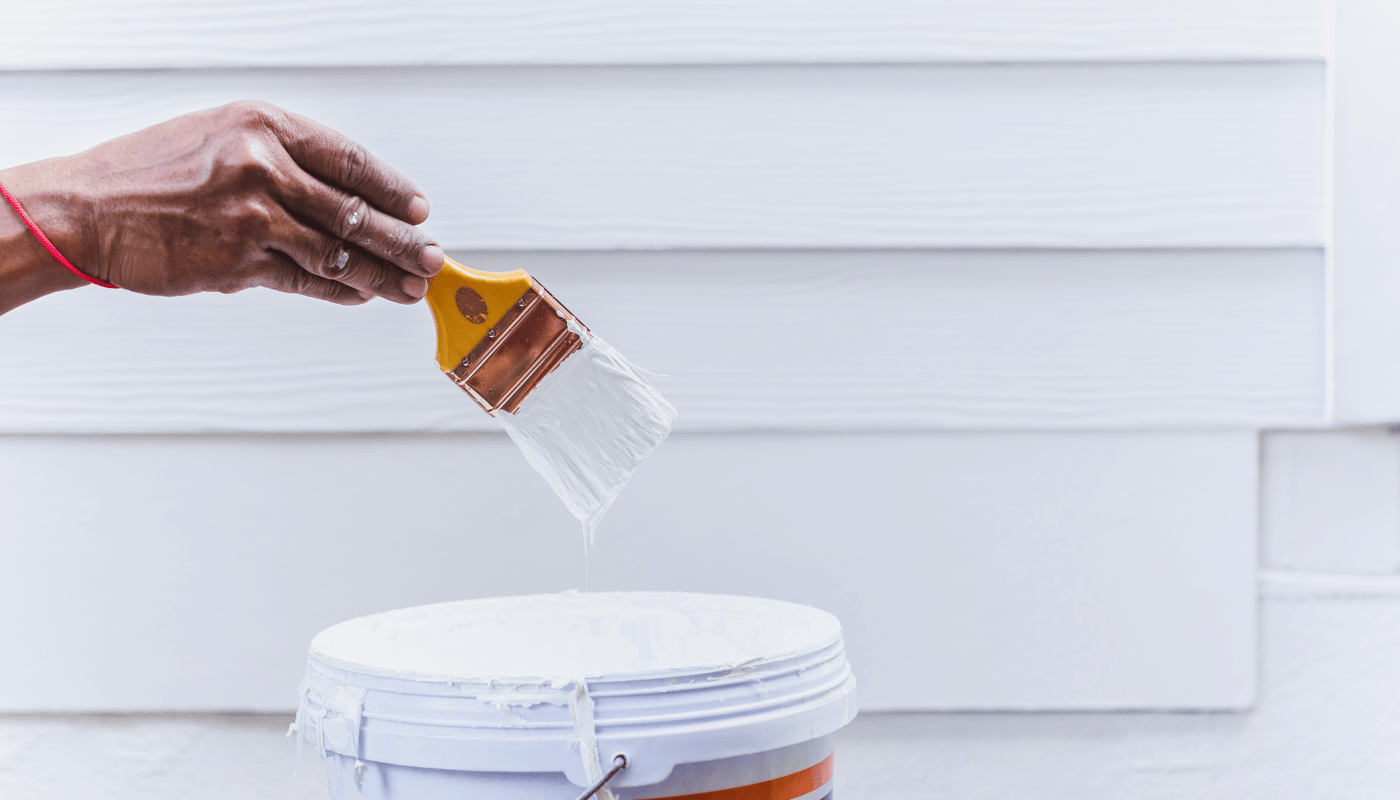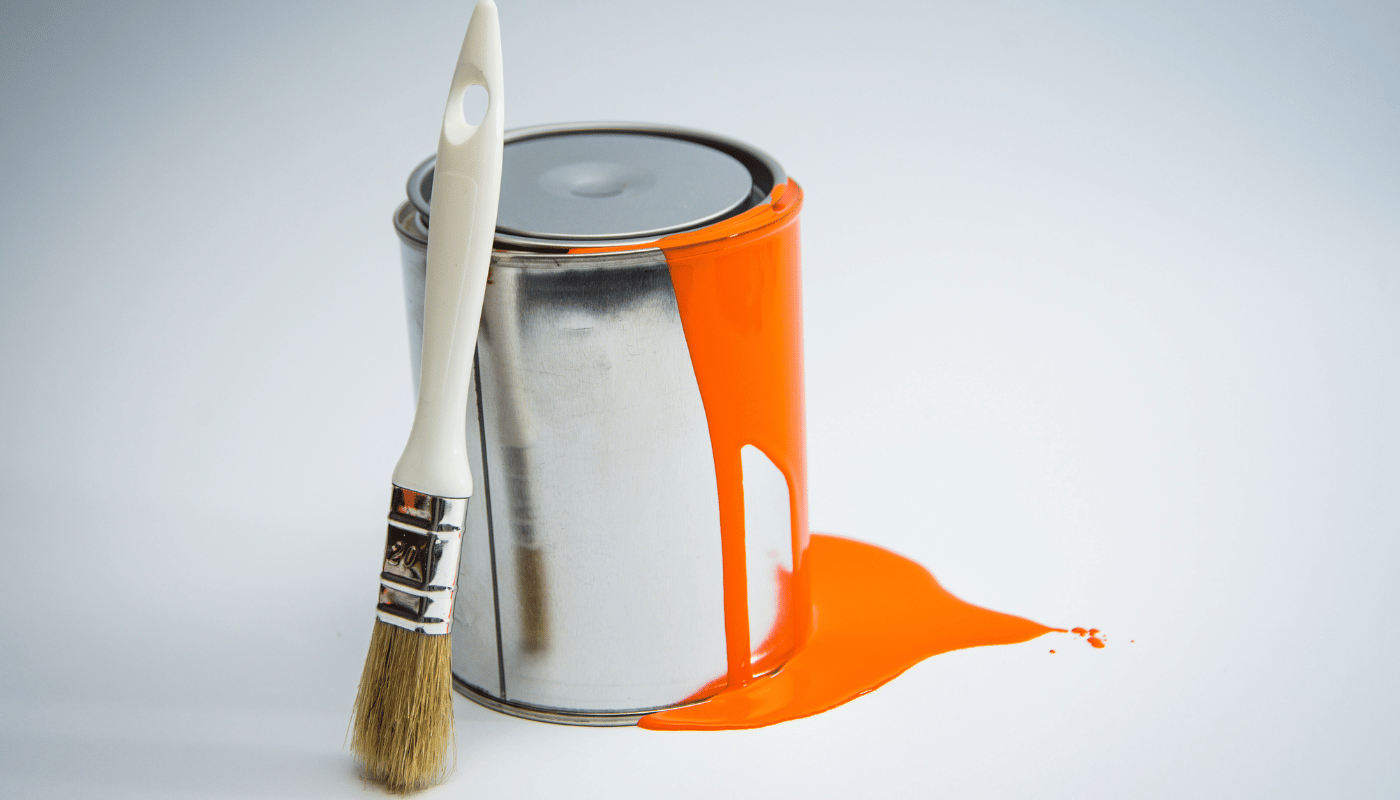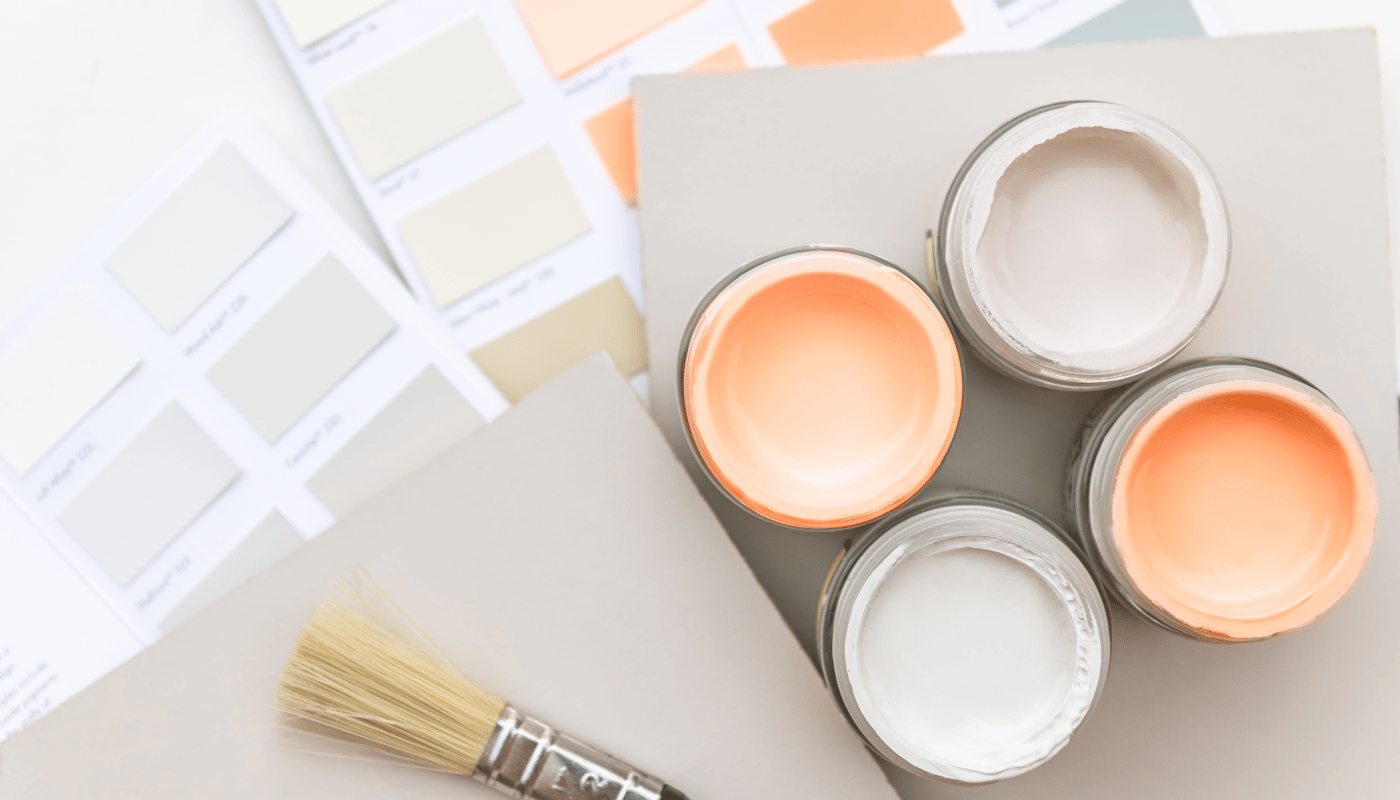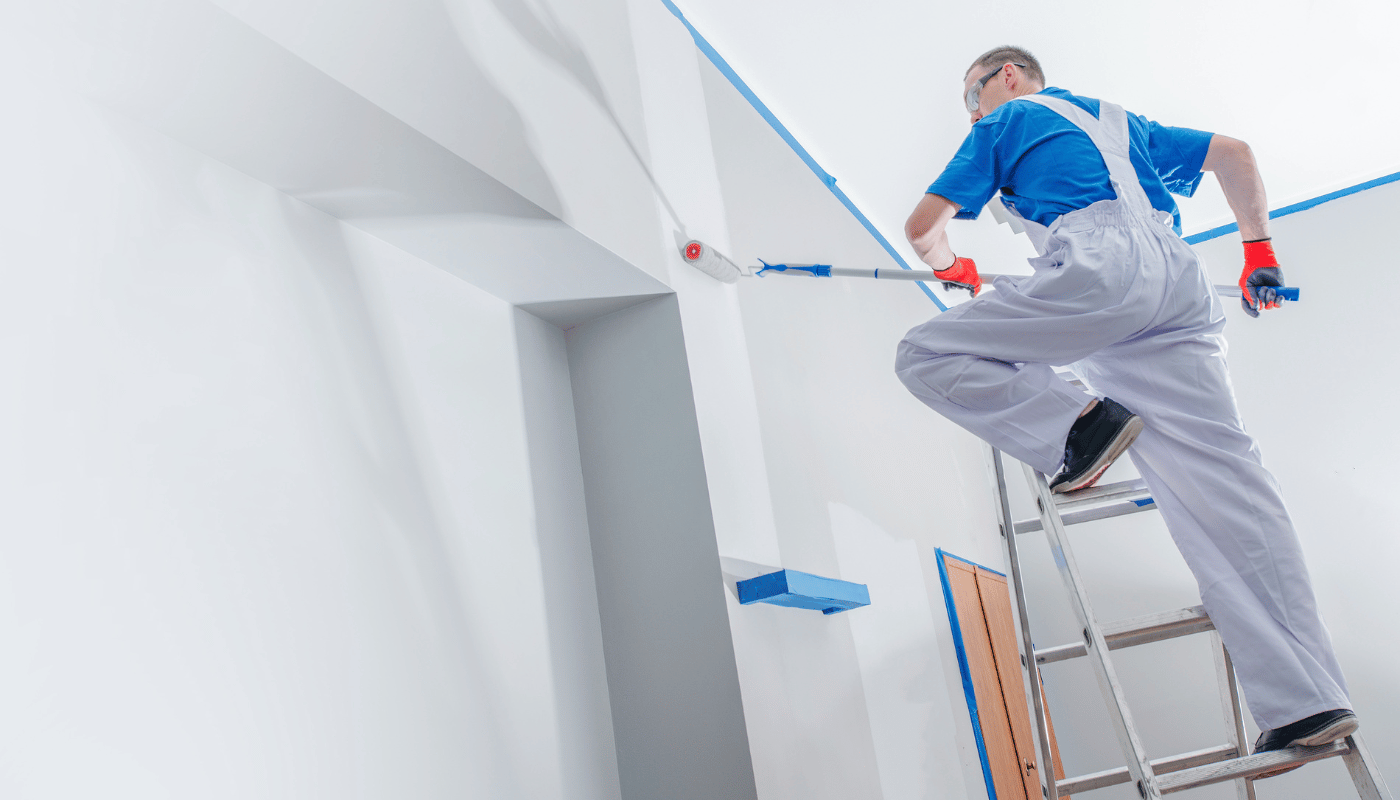Exploring the Different Types of Paint and Their Uses

With a wide variety of paint types available, each brings unique advantages and considerations.
Why so many options, you might wonder?
The answer often lies in the desired finish, the specific surface being painted, and even budget considerations.
Let Painters Newcastle help you look into the different types of paint and how to choose the best one for your needs.
Primer Paint: Essential for a Seamless Finish
Primer paint plays a crucial role in achieving a smooth, professional-looking finish.
Typically available in oil-based or water-based options, primers help paint adhere better to the surface.
Oil-based primers, in particular, are versatile, as they can pair well with both oil and water-based paints.
Skipping primer can lead to less-than-ideal results, often requiring a redo that costs time and money.
Primer creates a solid foundation, allowing the paint to bond effectively and last longer.
Application Tips:
Start by applying primer with a brush around edges, then work inward. Some primers may need one or two coats before you move to the main paint layer.
Best for: Ideal for a wide range of surfaces, primers work especially well on stained wood and metal. Any painted surface benefits from the added durability and finish quality that primer provides.
Pros:
- Prevents old paint from showing through.
- Creates a seamless, high-quality finish.
- Reduces the need for multiple coats to cover previous colours.
- Compatible with both water-based and oil-based paints.
Cons:
- May not always match the brand of your chosen paint.
- Adds an additional cost to the painting project.
Water-Based Paint: A Convenient and Safe Choice
Water-based paint is an excellent option for those seeking a low-odour, easy-to-use product without harsh chemicals.
It’s also simpler to clean up than oil-based paints, offering several advantages for both residential and commercial projects.
Application Tips:
Before painting, clear the surface of loose dust with a dry brush or vacuum. Lightly dampen the area with a cloth to help the paint adhere better. Water-based paint typically dries to the touch within an hour, making it convenient for quick jobs.
Best for:
Ideal for residential or commercial projects where fast drying is essential, allowing occupants to return to a fresh, safe space with minimal delay.
It’s also great for those wanting a low-odour, efficient paint job.
Pros:
- Easy cleanup with just soap and water.
- Quick drying, often touch-dry in an hour.
- Low in VOCs, leading to fewer odours.
Cons:
- Less durable than oil-based options.
- Often more expensive than other types.
- Prioritises ease of use over long-term durability.
Oil-Based Paint: Durable and Water-Resistant
Oil-based, or solvent-based, paint is known for its durability and water resistance, making it a top choice for professional painters who need a hard-wearing finish that also blocks stains effectively.
Application Tips:
When working with oil-based paint, stir it frequently to prevent separation. Use brushes or rollers specifically designed for oil-based products for the best results.
Best for:
Perfect for stained surfaces and metal prone to rust. Oil-based paint is an excellent choice for areas exposed to heavy rain or high moisture, where a resilient finish is essential.
Pros:
- Generally affordable for both residential and commercial projects.
- Offers long-lasting durability without visible signs of wear.
- Ideal for projects where a lasting finish is preferred.
Cons:
- Requires extended drying time, influenced by ventilation.
- Has a strong odour that may linger during the drying process.
Latex-Based Paint: Easy to Use and Ideal for Exteriors
Latex-based paint is a popular choice for exterior surfaces, offering ease of use and excellent protection.
It performs well on surfaces exposed to direct sunlight and helps block moisture from harsh weather conditions.
Application Tips:
For outdoor projects, be sure to choose a latex paint specifically formulated for exterior use to ensure durability and performance.
Best for:
Excellent for exterior surfaces,
concrete floors, and areas needing quick-drying protection from weather elements.
Pros:
- Simple cleanup with soap and water.
- Quick-drying, making it suitable for large areas.
- Works well on concrete and can be used on floors.
Cons:
- Takes time to cure fully, which may cause cracking on rough surfaces.
- Not ideal for furniture or surfaces with frequent contact or movement.

Enamel Paint: Durable with a Glossy Finish
Enamel paint is perfect for achieving a hard, glossy finish on smaller home projects.
Often used for touch-ups on outdoor grills, railings, and other metal surfaces, it adds a glass-like shine that enhances the look and durability of the object.
Application Tips:
Before applying enamel paint, dust the surface with a dry cloth to ensure a smooth finish. Use a high-quality brush, applying even coats without overloading the bristles.
Best for:
Ideal for small projects like outdoor gates, railings, and indoor metal surfaces needing a touch-up.
Pros:
- Extremely durable and long-lasting.
- Provides a high-quality, polished, and glossy look.
Cons:
- Takes longer to dry than other types of paint.
- Contains chemicals that may impact the environment.
Acrylic Paint: Versatile for Interior and Exterior Surfaces
Acrylic-based paint is a versatile choice suitable for both interior walls and ceilings, as well as exterior surfaces.
It offers a range of finishes from matte to glossy, allowing you to tailor the look to your preferences.
Best for:
Ideal for a wide range of surfaces, both indoors and outdoors, making it a go-to paint for many projects.
Pros:
- Dries relatively quickly depending on the finish.
- Works well for projects of all sizes.
Cons:
- Although it dries quickly, the curing process can take a few weeks to complete.
The Different Types of Paint Finishes
Just as there are various types of paint, there are also several finish options to choose from.
Here are a few popular finishes to consider for your next project.
Flat Finish: Luxurious and Refined for Low-Traffic Areas
A flat finish is ideal for adding a luxurious, sophisticated look to interior walls.
It works well on surfaces that are less likely to be touched, such as ceilings or high walls.
Pros:
- Provides a low-reflective surface that conceals surface imperfections.
- Budget-friendly, making it great for DIY projects.
Cons:
- Not suitable for high-traffic areas like bedrooms or living rooms where walls may be touched often.
- Lacks durability, so it may not be ideal for areas needing a resilient finish.

Matte Finish: Durable with a Subtle Sheen
A matte finish offers a slight sheen compared to flat paint, giving it a more durable quality that’s ideal for various areas in the home.
Many appreciate the soft, elegant look of matte paint, which works well on most walls and surfaces.
Best for:
Suitable for all walls, and particularly effective on ceilings, where it creates a refined look with long-lasting durability.
Pros:
- Highly durable and long-lasting.
- Excellent at hiding surface imperfections like cracks or inconsistencies.
Cons:
- May show signs of wear over time in high-traffic areas.
High Gloss Finish: Shiny, Durable, and Easy to Clean
High gloss paint offers a brilliant, reflective shine and excellent stain resistance, making it ideal for areas that require frequent cleaning, like cabinets and skirting boards.
It’s also a great choice for wet rooms and surfaces like railings and banisters, providing a sleek, stylish finish that’s easy to maintain.
Best for:
Perfect for furniture, cabinets, and other surfaces needing regular cleaning. Wet rooms also benefit from this durable, water-resistant finish.
Pros:
- Adds a fashionable, modern touch similar to semi-gloss.
- Enhances light, making spaces appear brighter and larger.
- Very easy to clean.
Cons:
- Prone to showing smudges and scratches.
- Typically more expensive than other finishes.
Satin Finish: Smooth, Velvety, and Versatile
A satin finish offers a subtle sheen with a smooth, velvety appearance.
Washable and durable, it’s similar to eggshell but with a slightly higher gloss. Satin provides a balanced look between flat and glossier paints, making it ideal for many areas of the home.
Best for:
Ideal for hallways, doors, and woodwork, as well as bedrooms and dining rooms, where its durability and subtle shine enhance the space.
Pros:
- Reflects more light than matte, adding warmth to rooms.
- Resilient in high-traffic areas and easy to clean.
Cons:
- May highlight surface imperfections.
- Touch-ups can be challenging to blend.
Semi-Gloss Finish: Durable and Moisture-Resistant with a Soft Shine
Semi-gloss paint offers a subtle shine that’s perfect for areas needing durability and frequent cleaning, such as kitchens and bathrooms.
It resists moisture well and can handle scrubbing, making it ideal for spaces prone to spills and dirt.
Best for:
Excellent for wet areas like kitchens and bathrooms where moisture resistance is essential.
Pros:
- Holds up well against moisture and frequent washing.
- Reflective surface can make spaces feel brighter and larger.
Cons:
- Highlights surface flaws, especially in direct light.
Eggshell Finish: Subtle Sheen with Lasting Durability
Eggshell paint provides a soft, low-luster finish, offering a step up from matte with added durability.
It combines a decorative look with practical resilience, allowing for occasional cleaning without sacrificing style.
Eggshell is ideal for surfaces needing a touch more durability than matte, with a hint of sheen that enhances the room’s look.
Best for:
Perfect for high-traffic walls and areas that need a durable, easy-to-clean surface, offering a balanced choice between elegance and practicality.
Pros:
- More durable than matte, with resistance to scuffs and marks.
- Washable surface makes it easy to maintain.
Cons:
- Touch-ups can be challenging to blend.
- Prone to minor scratches in busy areas.
Other Specialty Paint Types
If standard paint options aren’t quite right for your home renovation projects, consider these specialty paints for unique finishes and functions.
Spray Paint
Spray paint is ideal for updating specific items around the home, such as side tables, shelving, and even fabric pieces. It’s often used to refresh older furniture and appliances, offering a smooth, even finish that’s hard to achieve with a brush or roller. Spray paint is also great for reaching small crevices and can be used creatively for wall art, either freehand or with stencils.
Chalkboard Paint
Chalkboard paint offers a matte finish and a unique, functional surface for writing and drawing. With little prep needed, it provides excellent coverage and durability.
Being water-based, it has low VOCs, minimising odour compared to traditional paints.
Pros:
- Spray Paint: Smooth finish, reaches tight spots, versatile for creative projects.
- Chalkboard Paint: Low odour, durable, great for creating writable surfaces.
Cons:
- Spray Paint: Limited to smaller areas, requires ventilation during application.
- Chalkboard Paint: Higher cost than standard paints, needs waxing to resist scratches.
In Summary.
- Different paint types serve varied project needs, including primer, water-based, oil-based, latex, enamel, and acrylic options.
- Primers prepare surfaces for painting, improving paint adhesion and overall finish quality.
- Water-based paints are easy to clean up, low in VOCs, and great for quick, low-odour projects.
- Oil-based paints offer durability and water resistance, making them ideal for tough conditions.
- Latex paints work well on exteriors, with quick drying and weather-resistant properties.
- Enamel paints provide a glossy, durable finish for small projects, while acrylics are versatile for both indoor and outdoor applications.
- Paint finishes—such as flat, matte, gloss, satin, semi-gloss, and eggshell—impact both the appearance and durability of painted surfaces.
If you need further assistance, get intouch with the experts at Painting Newcastle.





